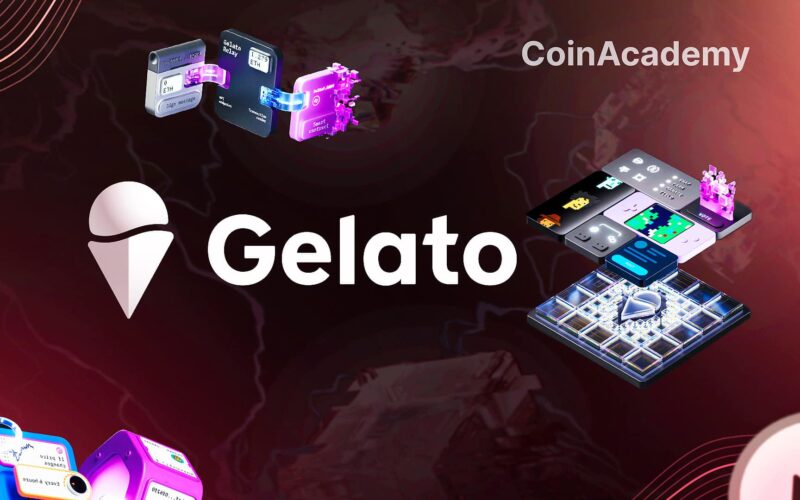The arrival of Layer 0 interoperability blockchains like Polkadot, Avalanche, and Cosmos has allowed many projects to have their own blockchain for several years. On the other hand, another narrative has emerged, aiming to propose a blockchain whose security is inherited from a more secure and decentralized Layer 1 like Ethereum. Following this model, projects like Arbitrum, Starknet, Optimism, and Polygon have released their stack.
A “stack” is a development kit that allows experienced developers to “copy” the technology of a blockchain to deploy it in a project without starting from scratch.
An example of the use of the OP Stack comes from Coinbase, which released the BASE blockchain.
The democratization of these solutions creates an ambition for new crypto projects to have their own Layer 2 rollups and Layer 3 appchains. This trend reflects not only a quest for scalability and transaction efficiency but also a deep desire for independence and flexibility in decentralized application development.
Naturally, in 2024, after a rapid technological evolution from data storage infrastructures or even blockchains themselves, “Rollup as a Service” (RaaS) solutions have emerged.
The story of Gelato
Before delving into the technical functioning of Gelato, it is important to know its history – dating back to 2019.
Gelato was born out of a shared frustration by its founders, facing the limitations imposed by the Ethereum Virtual Machine (EVM) execution environment – particularly regarding the management of off-chain logic for smart contract execution.
This period was marked by an inefficiency in automating smart contracts, forcing each web3 project to manage its own complex and costly centralized infrastructure to support the necessary computation for smart contract automation. There was a clear need for a generalized network that did not constrain web3 developers to choose between development speed, reliability, and decentralization. It is in this context that Gelato was conceived, as a response to the need for a more agile solution less dependent on centralized infrastructure.
Subsequently, and given the success of this initial challenge, Gelato began in 2022 to create a global infrastructure to further facilitate the creation of smart contracts on Ethereum.
The company has developed several solutions, including Relay to enable users to avoid paying gas fees, VRF to create randomness on the blockchain (widely used in NFT generation), and Functions, which allows calling APIs from the blockchain.
What is Gelato, the Rollup as a Service?
Gelato noticed early in the year the industry’s radical need for infrastructure that enables the easy and rapid creation of Rollups.
Gelato offers businesses the ability to deploy their own rollup in minutes, significantly simplifying the complex and technical process of launching custom blockchain solutions.
Gelato allows developers to use several execution infrastructures such as Polygon CDK, OP Stack, Arbitrum Orbit, and zkSync ZK Stack, as well as other data hosting solutions like Celestia, Avail, and Eigen DA (component of Eigen Layer).
Furthermore, Gelato facilitates the integration of independent validators via EigenLayer, thereby allowing decentralized verification and increasing network reliability.
This approach offers significant flexibility to companies seeking to maintain the integrity and transparency of their rollup while benefiting from robust infrastructure and a diversified network of validators.
Gelato Integrations
Gelato distinguishes itself from other Rollup-as-a-Service solutions with its comprehensive set of tools and services that the platform provides to developers.
These services include the integration of Gelato’s native solutions, ranging from gas relays to random verification functions (VRF), designed to simplify and optimize smart contract development on the blockchain.
Developers using Gelato can also integrate solutions from partners such as LayerZero for messaging between blockchains, Blockscout for greater transparency, and Safe for secure multi-signature (multisig) management.
Utility and Tokenomics of Gelato (GEL)
At the heart of the Gelato platform is a democratic governance structure and an economic model embodied by the Gelato DAO, powered by the Gelato token (GEL).
The GEL token plays a central role in aligning incentives among all network participants. It serves as a means of exchange within the Gelato ecosystem and is also used by token holders to express their support or opposition to proposals made within the DAO.
The goal is to allow Gelato users and developers to govern the protocol, giving them a meaningful voice to align the interests of the team, investors, and token-holding developers and thus define the “rules” that the infrastructure must adhere to.
Additionally, a prerequisite for participating in transaction execution on the Gelato network and consequently earning rewards is to acquire and stake GEL tokens.
Staking allows executors to reserve “slots,” granting them exclusive rights to collect fees for transaction execution during specific periods. This staking mechanism is designed to encourage active participation and ensure reliable and efficient transaction execution while supporting the circular economy within the Gelato ecosystem.
Conclusion
Gelato proves to be a driving force in the evolution of L2 solutions, offering a Rollup-as-a-Service (RaaS) platform that simplifies the deployment of custom rollups while integrating democratic governance through the Gelato DAO.




